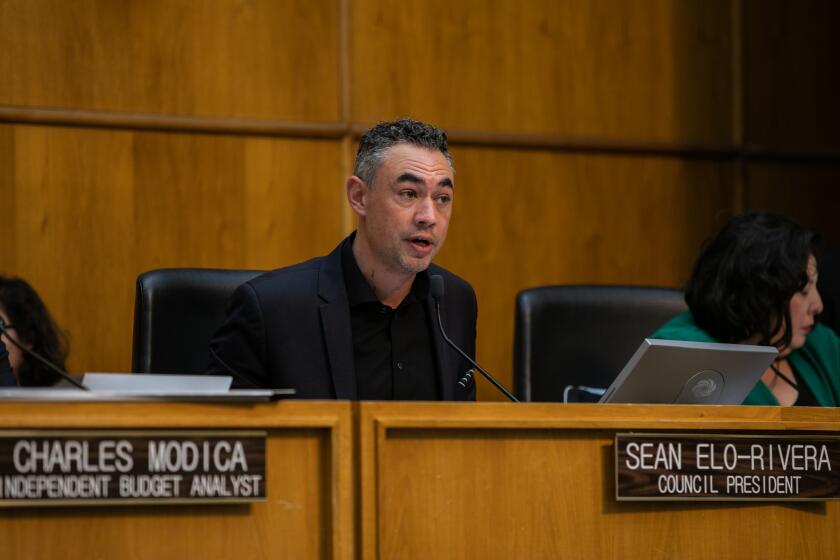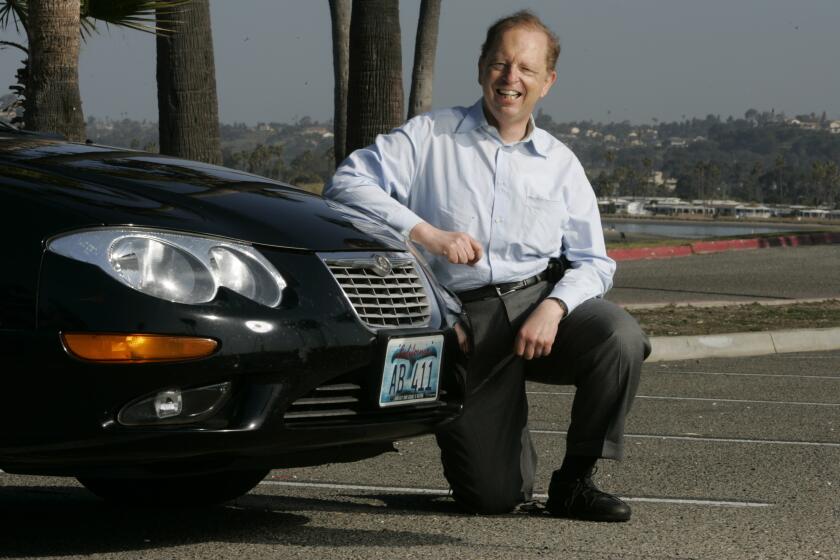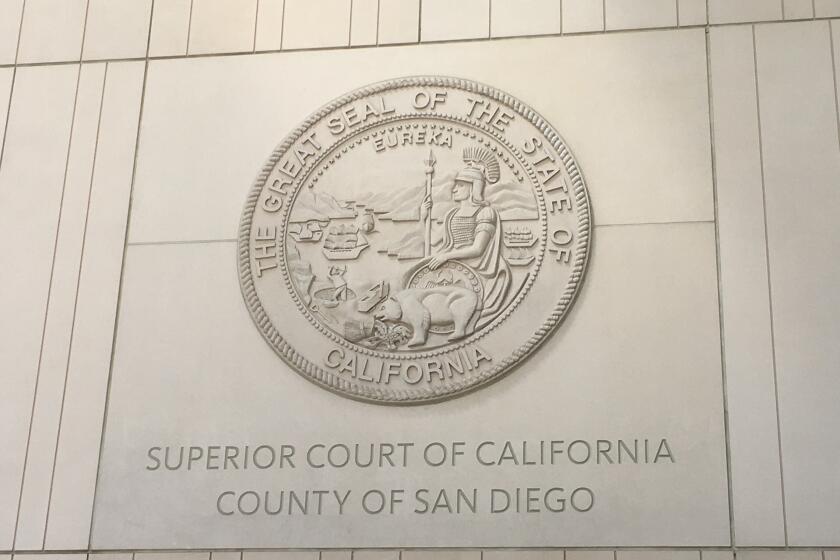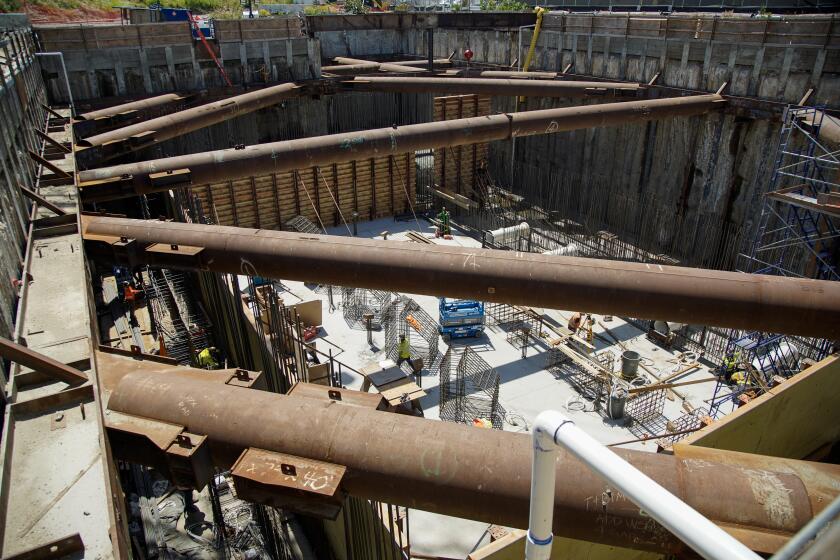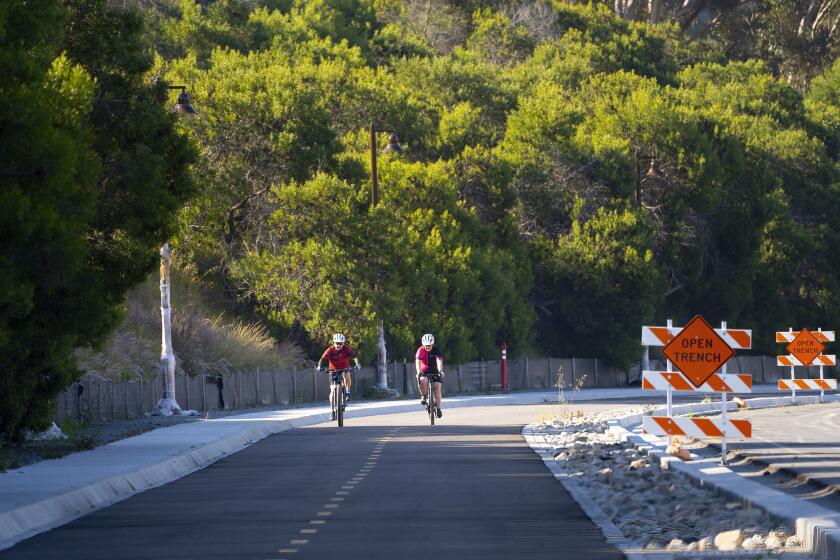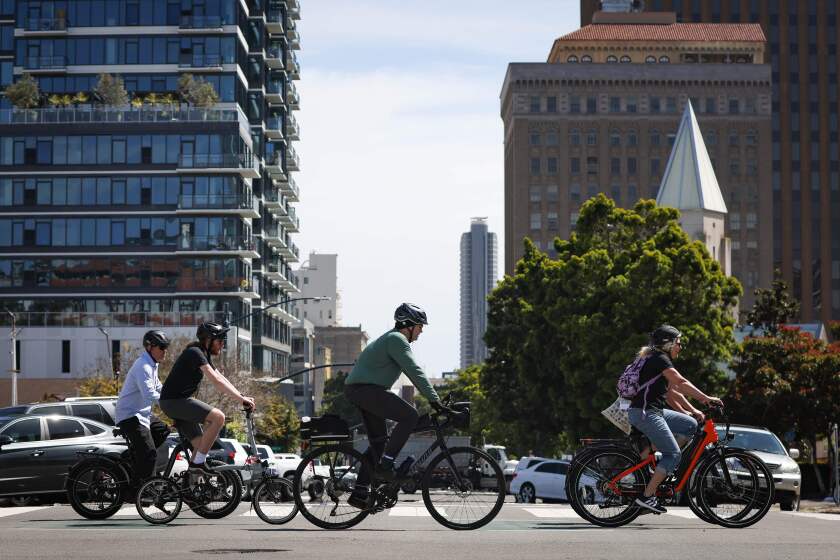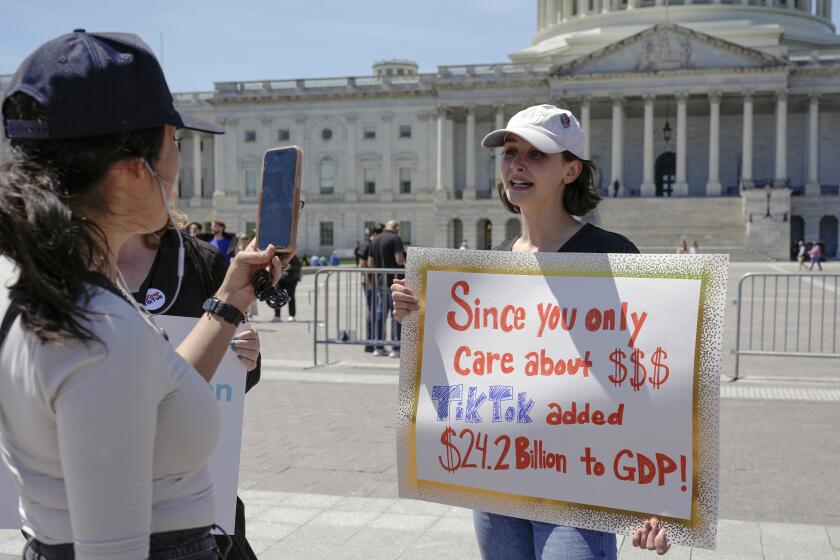Homeless strategy may change
Mayor Kevin Faulconer’s proposed city budget would shift homeless services in San Diego away from year-round shelters in favor of programs focused on getting people permanently off the streets.
Nearly $2 million devoted this fiscal year to making local shelters 12-month operations would be redirected next fiscal year to seven existing programs that focus on intervention, treatment and assistance with job seeking.
“We’ve prioritized funding for programs that actually end homelessness,” Faulconer said Tuesday.
The mayor, a Republican, credited City Council President Todd Gloria, a Democrat, for spearheading the shift in focus. Gloria, whose district includes downtown San Diego and its chronic homeless problem, proposed such a revamped approach this winter.
“It’s taking funds we’re already spending and redirecting them to proven solutions,” Gloria said. “Year-round shelters aren’t a solution to homelessness. The solution is supportive services that keep people off the streets.”
The shift was praised Tuesday by the Police Department’s homeless outreach team and organizations that provide services to San Diego’s estimated 6,000 homeless people.
But homeless advocate Bob McElroy said moving away from year-round shelters could be a mistake.
“The shelters are the central intake point where people can be sent to detox, undergo a needs assessment and get a mental health screening,” said McElroy, chief executive of the Alpha Project, which runs the city’s 225-bed downtown shelter for homeless adults near Petco Park.
McElroy said outreach teams will no longer have an obvious place to take homeless people.
“You meet someone, you assess them and then you take them to a shelter,” he said. “It’s going to be a real challenge without shelters.”
Gloria said he understood many people still support the concept, but he stressed that San Diego has only had year-round shelters since shortly after Mayor Bob Filner was elected in 2012. He also noted that Filner had underestimated the cost of keeping the shelters open year-round.
In addition, Gloria said $800,000 of the $1.9 million that had been devoted to year-round shelters would go to the city’s adult shelter, ensuring it will be open from late November to late March as it was before Filner expanded its duration.
The $800,000 would also help boost assessment and case management services at that shelter and a federally funded, 150-bed shelter for veterans on Pacific Highway.
Another $400,000 would be redirected toward case management software that would allow social service agencies to share data, keep better track of their successes and failures, and apply for more grants.
About $150,000 of the redirected money would fund The Check-It Center on 16th Street, where homeless people can store their goods while applying for jobs or seeking treatment.
Other programs getting money would be Connections Housing, $300,000; the Serial Inebriate Program, $120,000; the Homeless Outreach Team, $40,000; and the Neil Good Day Center, $40,000.
Police Lt. Debra Farrar, supervisor of the outreach team, praised the city’s shift in focus Tuesday.
“This is a great move because a shelter solves the problem for just one night,” she said, adding that shelters reduce the incentive to find more permanent housing. “We shouldn’t be more interested in finding them a place than they are.”
Gloria said creating incentive was a key goal of the new approach.
“We need to hold folks accountable for moving up and out,” he said.
david.garrick@utsandiego.com (619) 269-8906 @UTDavidGarrick
Get Essential San Diego, weekday mornings
Get top headlines from the Union-Tribune in your inbox weekday mornings, including top news, local, sports, business, entertainment and opinion.
You may occasionally receive promotional content from the San Diego Union-Tribune.

